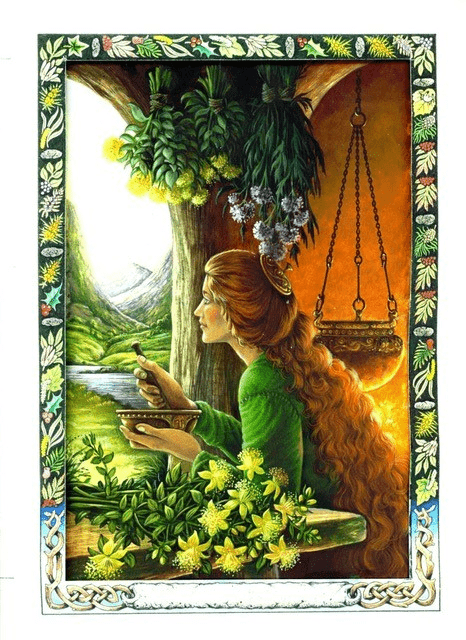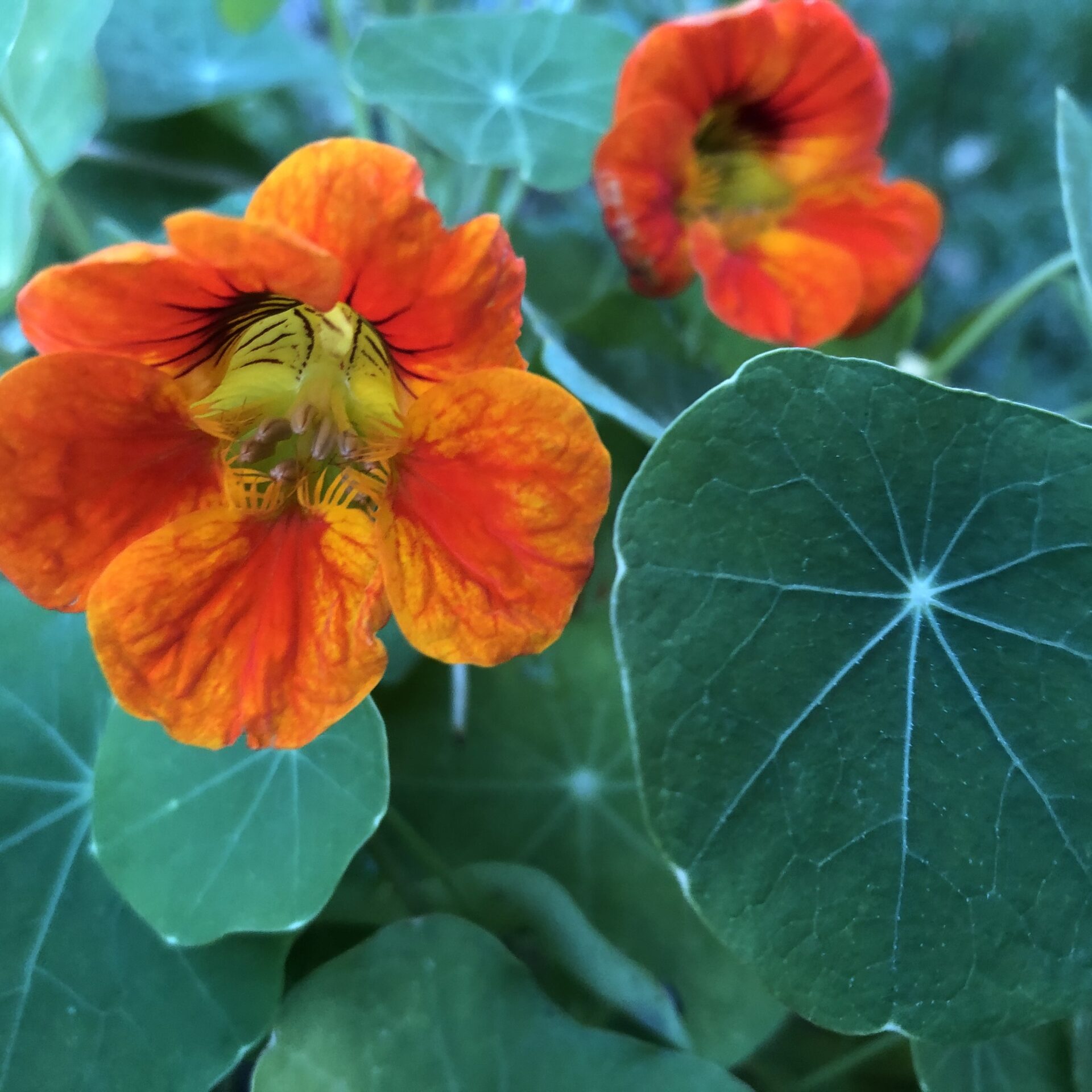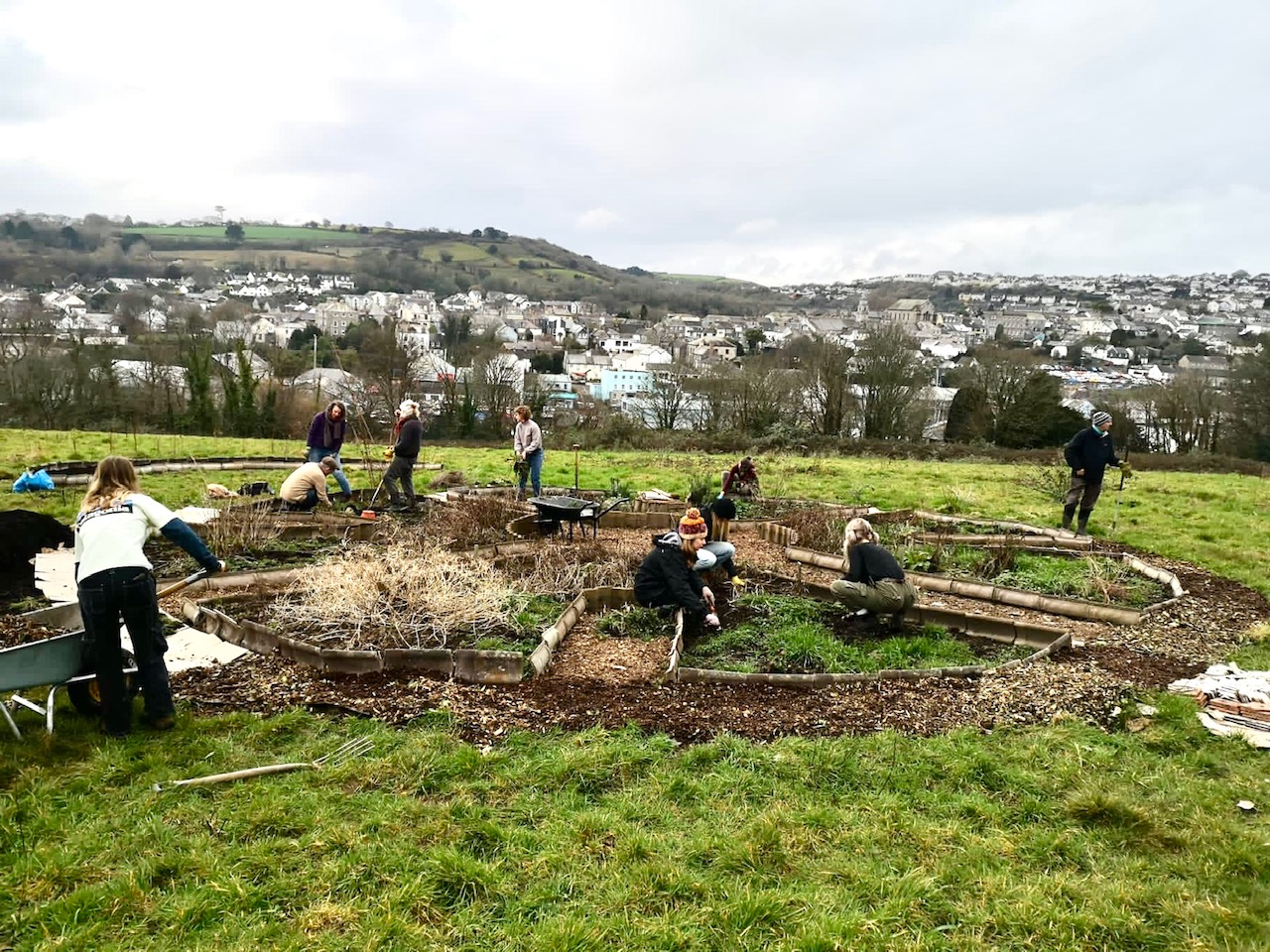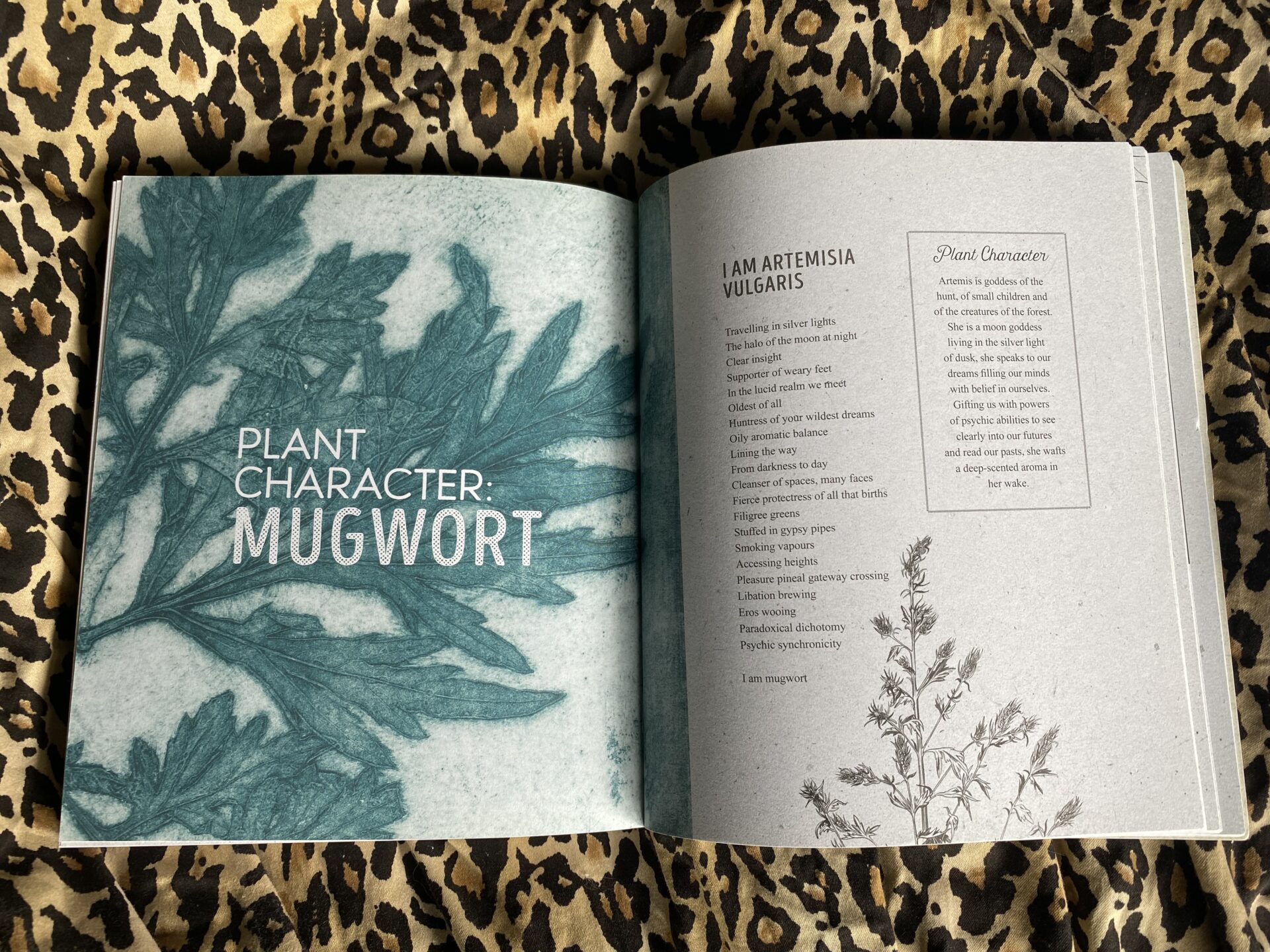Us Seed SistAs have had the pleasure of sharing herbal skills at a few Druid Camps and it was at one of these camps that we came across the lovely Phillip Carr-Gomm, here he tells us a little about Druidry –
The Druids – and the thirteen ways they use plants
People who follow or are inspired by Druidry today love the way it helps to open them to the natural world: to the world of plants, animals, stones and stars; the way it helps them to feel connected to an ancient pre-Christian heritage – an indigenous magical, spiritual, shamanic heritage of these islands.
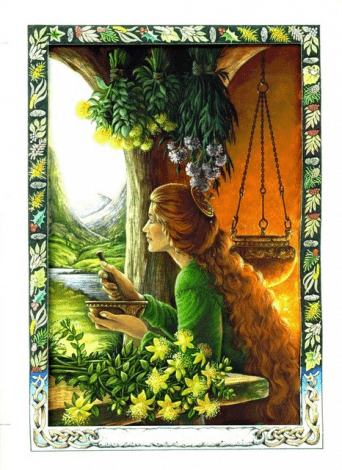
The Restorers Card from the Druid Plant Oracle by Philip & Stephanie Carr-Gomm, illustration by Will Worthington
And at the heart of Druidry stand the trees, which we sense as our teachers, our companions, and as Beings with whom our destiny is intimately related – without them we would not and could not be here. The very word Druid probably comes from root-words which mean ‘Oak’ and ‘Knower’ – so the Druid is the Forest Sage, and a group of Druids is indistinguishable in our terminology from a group of trees: if a friend invites you to a Druid Grove, you will not know whether that means you will attend a meeting of fellow humans, who are Druids, or whether you will find yourself in a woodland sanctuary. Ideally you’ll meet both! You’ll end up with a bunch of like-minded folk in a woodland setting.
The roots of Druidry can be traced way back into the Iron Age and beyond, over 2,500 years ago, but with the coming of Christianity, much of the tradition was lost. About 300 years ago, there was a revival of interest in the subject, which means that the Druidism practised today has a recorded history of almost three centuries.
We know from the writings of the classical authors that the ancient Druids revered, and worked with, certain plants in particular: above all mistletoe, which Pliny tells us they culled with a golden sickle on a waxing moon; then there was Vervain, known as the Enchanter’s Plant; and two mysterious plants he calls Selago and Samolus, by which he probably meant fir club moss and water pimpernel. But then – as far as the classical accounts go – the trail goes cold.
Druids today are in a position rather like the goddess Airmid of Irish mythology, whose father the god of healing Diancecht, scattered the 365 herbs of tradition to the four winds, obliging Airmid to slowly try to recover the lost knowledge.
And rather than seeing this as a problem, I like to see it as a way in which it avoids the burden of dogma that comes to any tradition that is conserved apparently intact across the centuries. And so, because Druidry has followed a natural cycle of death, with the coming of Christianity, and then a rebirth, from the 17th century, we are free of such a burden, yet we can also still sense our connection way back into the past. In addition, this situation encourages us towards looking deeply and connecting to the wisdom that lies within – within ourselves and within the Otherworld. And outside too – scattered in the folktales and literature.
An example of this is the wonderful Ogham – an alphabet drawn from trees and woodland plants that has become known as the ‘Druids’ Tree Language’, and we have the story from the Welsh Mabinogion of ‘Flower-Face’ the goddess Blodeuwedd formed by the magician Gwydion:
Not of father nor of mother
Was my blood, was my body.
I was spellbound by Gwydion,
Prime enchanter of the Britons,
When he formed me from nine blossoms,
Nine buds of various kind;
From primrose of the mountain,
Broom, meadow-sweet and cockle,
Together intertwined,
From the bean in its shade bearing
A white spectral army
Of earth, of earthly kind,
From blossoms of the nettle,
Oak, thorn and bashful chestnut –
Nine powers of nine flowers,
Nine powers in me combined,
Nine buds of plant and tree.
Long and white are my fingers
As the ninth wave of the sea.
‘Hanes Blodeuwedd’ translated by Robert Graves
This woman, formed from plants, is then transformed by Gwydion into an owl, the bird that unlike all other birds, can see in the darkness. Like Blodeuwedd, we must look into the Otherworld, the night world of secrets, to discover more of our plant lore.
Today, as Druids, we use plants in at least thirteen ways, and I’m going to invite you to a Druid ceremony to experience how we do this. At the end of October in the Southern hemisphere, Druids will be celebrating the Spring festival of Beltane, but here in the northern hemisphere, as we enter the dark time of Winter, we conduct a ritual at the time of Samhain between October 31st and 2nd November. In this rite, we sense the old year dying, and we remember the Ancestors, the people we love who have shed their bodies in this earthly existence.
Imagine you are sitting in a circle which has been prepared with an altar in the centre of the room, and four smaller altars at each of the directions. The Druids come into the circle wearing robes of linen, dyed in different colours with woad, madder or weld. They have bathed beforehand in water that has had Agrimony steeped within it, and you are invited to bathe your forehead in water that has been similarly prepared.
Once opening prayers and invocations have been said, a Druid casts a circle using a hazel wand, then lights blocks of charcoal and sprinkles on to them an incense made from crushed and dried juniper berries and bark, mixed with agrimony and mugwort. Small muslin bags with eyebright are handed to each participant to pin to their clothes – this, they say, will protect you from malign spirits. A further precaution is taken. As one of their number opens a window, letting the cold outside air into the room, they first sprinkle cloves of garlic on the windowsill, again to ensure only good spirits make contact, and then the ‘Spirits of the Departed’ are invited to a feast. Offerings of honey, bread, salt and wine are thrown into a fire bowl. They crackle and hiss as the fire consumes them. Everyone in the circle then partakes of the feast in silence, communing with their loved ones. It is one of the most solemn and touching moments in the eight seasonal festivals that we as Druids celebrate.
The remains of the feast are consumed by the fire, the spirits are thanked for their blessings, and we send our prayers and love to them, and then they are asked to leave. The window is closed and sprigs of yew are handed to each participant as symbols or charms that represent eternity and long life. It is possible that members of the circle, or perhaps a new Bard might be anointed too, with an oil which has had primrose and vervain steeped in it.
A member may then wish to cast a spell, and here a Druid would be cautious. A spell is simply a wish or prayer whose efficacy is believed to be heightened by the use of physical acts, such as writing on parchment which is then burned in a fire. Druids very rarely cast spells, particularly not in public festivities, but for the sake of this illustration let us say that one of their company wishes to make a spell to rid themselves of unwanted negative feelings. They might stand before the fire-bowl and, taking a handful of the ground juniper and agrimony that was used as an incense, hold it to their heart and say ‘May I be freed of all negativity!’ and with a sweeping gesture throw the mixture into the fire.
It might then be time to use an oracle to look beneath the surface flow of events – not to tell the future, but to discern the currents that are carrying us forward – to help us make informed decisions about our life. We use various kinds of oracles, but let’s imagine that we use The Druid Plant Oracle that takes the wisdom and teaching of plants and applies it to the dynamics and circumstances of our lives.
At the end of the rite, the Druid will uncast the circle and say, ‘As the fire dies down, let it be relit in your hearts. May your memories hold what the eye and ear have gained.’
And the memories, sights, sounds and smells of such a ritual do indeed stay with you in your heart. I can still remember the very first Samhain ritual I attended in a basement flat in West London fifty years ago.
There in that ceremony you can see all of the thirteen ways that Druids use plants:
1. In clothing – made from flax or wool, dyed ideally with plant dyes.
2. In sacred eating – a feature of many religious rites.
3. Sacred drinking too. In this ritual red wine is used. In other Druid ceremonies it is most often mead.
4. In lustration – for sacred bathing: agrimony for cleansing.
5. In burning – as incense: juniper and agrimony for cleansing, mugwort for psychism.
6. As charms or talismans for protection: the eyebright in bags and the garlic.
7. As offerings – all that was placed in the fire and the yew sprigs gifts.
8. The anointing with oil.
9. In ritual gesture – with the wand of hazel.
10. Spell-casting.
11. In an oracle.
12. For healing – these rituals are profoundly healing.
13. For changes in consciousness – your awareness is changed in such a rite, and plants have played their part in effecting this transformation.
By Philip Carr-Gomm

Philip has been leading the Order of Bards Ovates & Druids for the last 32 years, but this summer he has handed on this role to Eimear Burke, a psychologist and herbalist from Ireland. Philip and his partner Stephanie, along with artist Will Worthington, created The Druid Plant Oracle, which is available as an app here and as a set of cards with accompanying book.
Link to cards and book: https://www.philipcarr-gomm.com/book/the-druid-plant-oracle/
Link to app: http://www.foolsdog.com/DruidOracles/
Link to my website: https://www.philipcarr-gomm.com/
Link to Druidry website: https://www.druidry.org//

